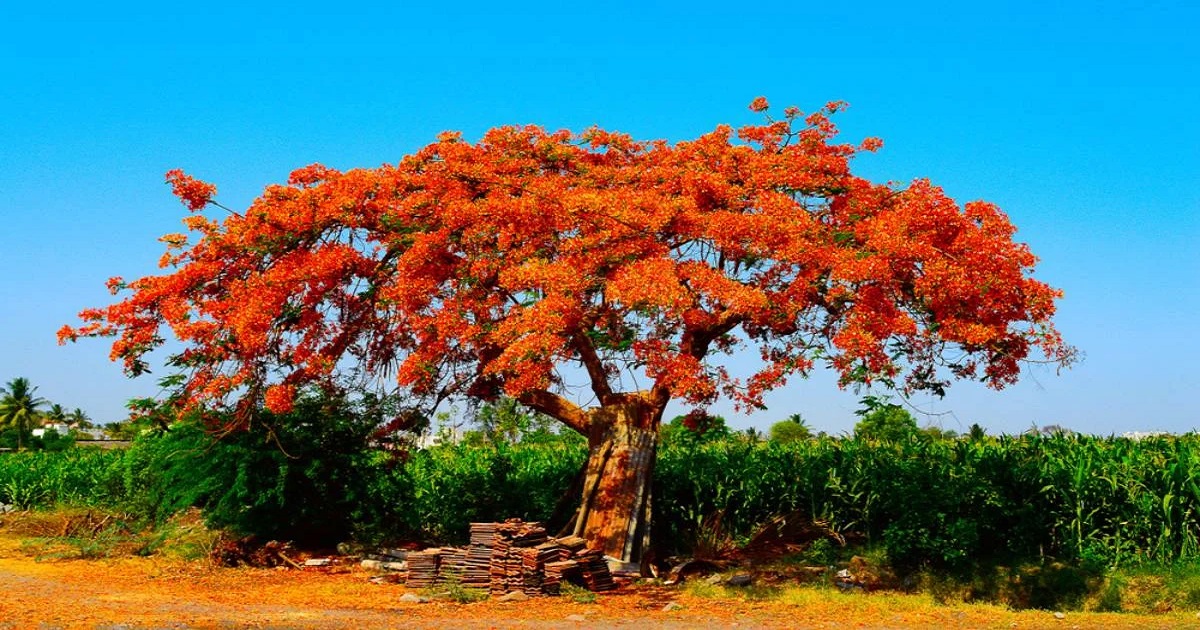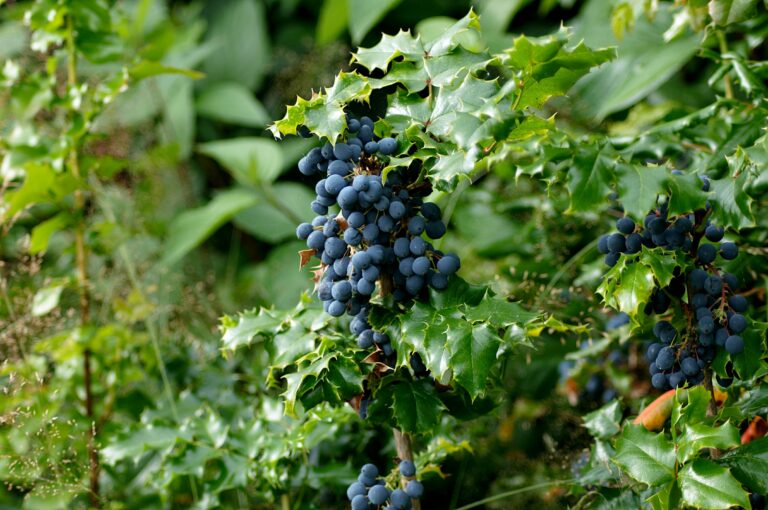If you have ever wandered through a tropical landscape and been captivated by a burst of vibrant red-orange blooms, chances are you’ve encountered the Gulmohar plant. With its striking appearance and numerous benefits, the Gulmohar has secured its place not only in gardens but also in hearts around the world.
Botanical Description
The Gulmohar, scientifically known as Delonix regia, is a species of flowering plant in the pea family, Fabaceae. It is renowned for its flamboyant display of flowers and feathery foliage. Typically, it grows into a medium-sized tree, reaching heights of up to 10 to 12 meters, with a spread of 5 to 7 meters.
Origin and Distribution
Native to Madagascar, the Gulmohar has spread to various tropical and subtropical regions across the globe. Its adaptability to different climates has made it a popular choice for landscaping in countries like India, Australia, and parts of the Americas.
Cultivation and Care
Gulmohar thrives in full sunlight and well-drained soil. It is relatively drought-tolerant once established but benefits from regular watering, especially during the dry season. Proper pruning and occasional fertilization can encourage healthy growth and abundant flowering.
Flowering Season
The Gulmohar typically blooms from late spring to early summer, although exact timing may vary depending on the local climate. Its vibrant flowers, which resemble clusters of fiery flames, create a breathtaking spectacle that attracts bees, butterflies, and birds.
Flowers and Foliage
The flowers of the Gulmohar are characterized by their vivid hues of red, orange, and occasionally yellow. Each flower consists of four spreading petals and a central cluster of stamens. The foliage is bipinnately compound, with delicate fern-like leaves that provide dappled shade underneath the canopy.
Landscaping Uses
Gulmohar trees are prized for their ornamental value in landscaping projects. They can be planted as standalone specimens or used to line avenues and streets, adding a pop of color to urban environments. Their graceful form and eye-catching blooms make them a favorite choice for parks, gardens, and public spaces.
Medicinal and Therapeutic Properties
In traditional medicine, various parts of the Gulmohar plant are used to treat a range of ailments, including fever, inflammation, and digestive disorders. Recent studies have also highlighted its potential pharmacological properties, such as antioxidant and antimicrobial effects.
Environmental Benefits
Beyond its aesthetic appeal, the Gulmohar plays a crucial role in environmental conservation. Its dense foliage provides shade and habitat for wildlife, while its extensive root system helps prevent soil erosion. Additionally, the tree’s ability to sequester carbon dioxide contributes to improving air quality.
Cultural Significance
In many cultures, the Gulmohar holds symbolic significance, representing themes of love, passion, and vitality. In India, it is associated with the onset of summer and is often mentioned in poetry and literature as a harbinger of the season’s warmth and beauty.
Common Varieties
Several cultivars of Gulmohar exist, varying in flower color, size, and growth habit. Popular varieties include ‘Flame of the Forest,’ known for its intense red flowers, and ‘Yellow Gulmohar,’ prized for its golden blooms. Each variety offers unique aesthetic appeal and landscape potential.
Maintenance and Pruning
Regular maintenance, including pruning, is essential for keeping Gulmohar trees healthy and attractive. Dead or diseased branches should be removed to prevent the spread of pests and diseases. Proper pruning techniques can also help shape the tree and promote optimal flowering.
Harvesting and Seed Propagation
Gulmohar seeds can be collected from mature pods once they have dried and turned brown. To propagate new trees, the seeds should be scarified and soaked in water before planting in a well-drained potting mix. With proper care, seedlings will emerge within a few weeks, ready to be transplanted into the garden.
Conservation Status
While Gulmohar trees are not considered endangered, their widespread cultivation and habitat loss in some regions raise concerns about their long-term conservation. Efforts to protect existing populations and promote sustainable cultivation practices are essential to ensure the continued survival of this iconic species.
Conclusion
In conclusion, the Gulmohar plant stands as a testament to nature’s beauty and resilience. From its dazzling display of flowers to its ecological contributions, it enriches our lives in myriad ways. By nurturing and appreciating Gulmohar trees, we not only enhance our surroundings but also forge a deeper connection to the natural world.
FAQs
- Can Gulmohar trees be grown in containers?
- Yes, Gulmohar trees can be grown in large containers, provided they receive adequate sunlight and moisture.
- Do Gulmohar trees attract pests?
- While Gulmohar trees are generally resilient to pests and diseases, they may occasionally attract caterpillars, aphids, or scale insects. Proper care and maintenance can help minimize pest problems.
- How fast do Gulmohar trees grow?
- Gulmohar trees are known for their rapid growth rate, especially in optimal conditions. Under favorable circumstances, they can grow several feet per year.
- Are Gulmohar flowers fragrant?
- No, Gulmohar flowers do not typically have a strong fragrance. Their appeal lies more in their vibrant colors and striking appearance.
- Are Gulmohar trees suitable for small gardens?
- While Gulmohar trees can grow quite large, some compact varieties are suitable for smaller gardens or urban spaces. It’s essential to consider the tree’s eventual size and growth habit when selecting a planting location.



















